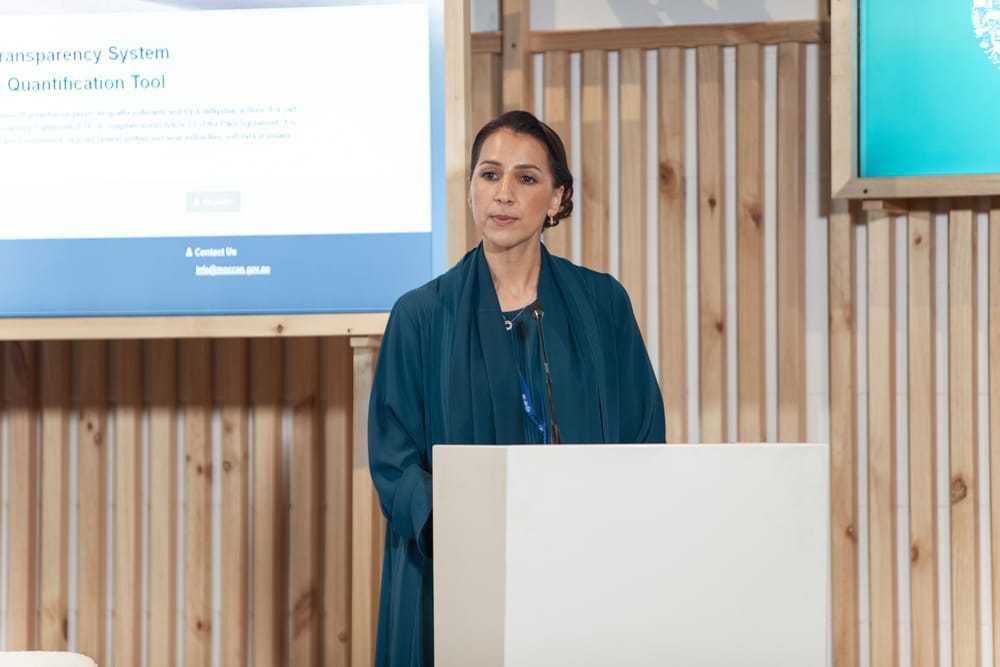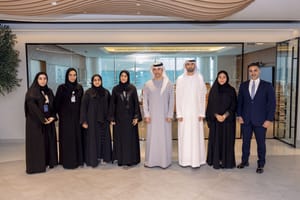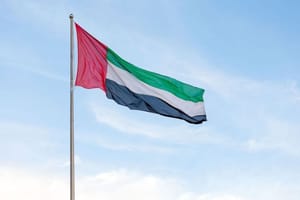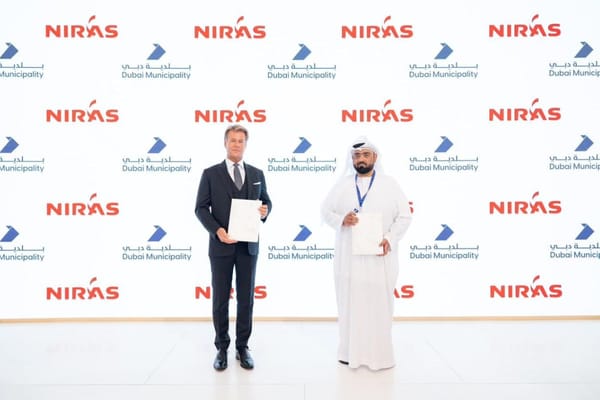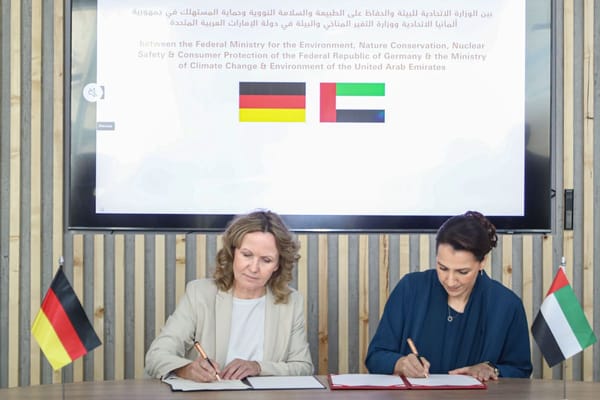Mariam bint Mohammed Almheiri, Minister of Climate Change and the Environment, today announced the launch of the UAE’s ‘Integrated Emission Quantification Tool’, which will enable the tracking of greenhouse gas emissions, air quality pollutants and mitigation efforts.
Announcing this milestone in the UAE’s climate action initiatives, Almheiri said the Integrated Emission Quantification Tool is a very important part of the UAE's National Monitoring, Reporting and Verification (MRV) Transparency System, announced in 2021. The UAE was the first country in the region to develop this integrated system in line with the Enhanced Transparency Framework (ETF) under the Paris Agreement.
“This is an exemplary model of commitment and innovation in addressing the global challenge of climate change and a regional first in developing an integrated emissions registry. The advanced tool will help us estimate and report on the emissions of greenhouse gases, air quality pollutants, and track mitigation actions.”
Almheiri said the UAE continues to take practical and actionable steps towards tackling climate change in line with the enhanced transparency framework of the Paris Agreement.
“Our MRV Transparency System underscores the nation’s commitment to transparency, accountability, and action-oriented climate action strategies. These are also a testament to the UAE’s role as a global leader in driving climate action.”
At the session, officials of the UAE Ministry of Climate Change and Environment and key partners who collaborated on the National MRV (MRV) Transparency System shared the groundbreaking efforts in developing the region’s first integrated emissions inventory. The tool is designed to be used by the Ministry of Climate Change and Environment, relevant federal and local authorities, and data providers.
The National MRV Transparency System has four overarching objectives: support the implementation of the National Climate Action plan, meet international reporting obligations, track progress, and deliver on the mandate of the National Quality Agenda 2031. The first phase of the project was undertaken from March 2021 to December 2022, when benchmarking assessments and a roadmap for action was completed.
Currently, in the second phase (2023 to 2026), institutional arrangements, system design and implementation, and an emissions inventory for greenhouse gas emissions and air quality are being conducted. The third phase includes incorporating other components of the ETF including tracking the Nationally Determined Contributions, adaptation, finance, and capacity building.
One of the pioneering initiatives by the UAE, the National MRV Transparency System and the Integrated Emission Quantification Tool have been developed through extensive stakeholder engagements for the technical design and usability of the tool. The system will ensure that the National Air Emissions Inventory remains a relevant tool for the public and private sector to monitor progress against GHG mitigation targets and to reduce air pollution.
Earlier this year, the UAE submitted the Third Update of its Second Nationally Determined Contributions with the goal of achieving 40 percent emission reduction by 2030 compared to business as usual. To track progress towards this target, the country periodically updates its GHG emissions inventory, accounting for emission sources and sinks.
Improving air quality is a priority for the UAE and the Ministry of Climate Change and Environment has initiated a project to develop the first national-level inventory for air pollutant emissions. Launched in 2019, the inventory played a key role in developing the National Air Quality Strategy by identifying key pollutants and major polluting sectors. The inventory enables federal and local government entities to make informed decisions relating to air quality.
News Source: Emirates News Agency
